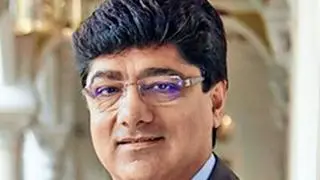“We are local, globally,” says Kieran Murphy, Global President and CEO of GE Healthcare, on the increasing shift towards localisation across the world.
Responding to a query on the campaigns for Brexit, ‘America First’ and ‘Make in India’, Murphy said that the company had a local presence in China, Europe and the United States, for example, making them a local multinational.“We live in a world that’s volatile,” he said, referring to trade related tariff barriers and added, “We have to cope with that.”
Murphy was appointed as global President and CEO of GE Healthcare last June, replacing John Flannery who was elevated as global CEO and Chairman GE.
Earlier this month , Flannery was abruptly replaced as GE chairman and CEO by Larry Culp.
Murphy’s mandate includes the spin out of GE Healthcare as a separate company in 2019. The $20 billion global healthcare entity had $3.4 billion in profit last year, accounting for 15.8 per cent of the conglomerate’s total sales.
Murphy was speaking at the Jack Welch Technology Centre in Bangalore on Monday, his first visit after taking over as global chief of the healthcare company.
Speaking at the same interaction, Nalinikanth Gollagunta, President and CEO, GE Healthcare, South Asia, stated that investments will continue in India, even as GE Healthcare is set to be become a standalone company next year. “We haven’t seen a change in the language and investments will happen,” he said, without giving a number on the investments. GE has invested $120 million in India in the last ten years.
Making for India
As a part of its localisation efforts, Gollagunta compared MRI or CT scan machines sold in India which have 30 per cent smaller footprint to accommodate in space constrained hospitals, consumes 28 per cent lesser electricity, which continues to be an issue in many places.
The company is also banking on AI to help in improving its processes. For example, when a patient is about to undergo a scan, which can last from 45-60 minutes, a considerable portion of time is additionally spent on the posture of a patient to get an accurate result. Through AI we can cut down on manual interventions as the machine will mark the exact spot where a person should be situated, which in turn helps in more scans thereby generating more revenues, said Gollagunta.
AI can also be used for developing an automated systems that can analyse chest X-Rays and flag-off the possibility of tuberculosis.
GE is taking these steps as it sees competition from Japanese and European companies in top end machines and low cost Chinese companies at the entry level.








Comments
Comments have to be in English, and in full sentences. They cannot be abusive or personal. Please abide by our community guidelines for posting your comments.
We have migrated to a new commenting platform. If you are already a registered user of TheHindu Businessline and logged in, you may continue to engage with our articles. If you do not have an account please register and login to post comments. Users can access their older comments by logging into their accounts on Vuukle.